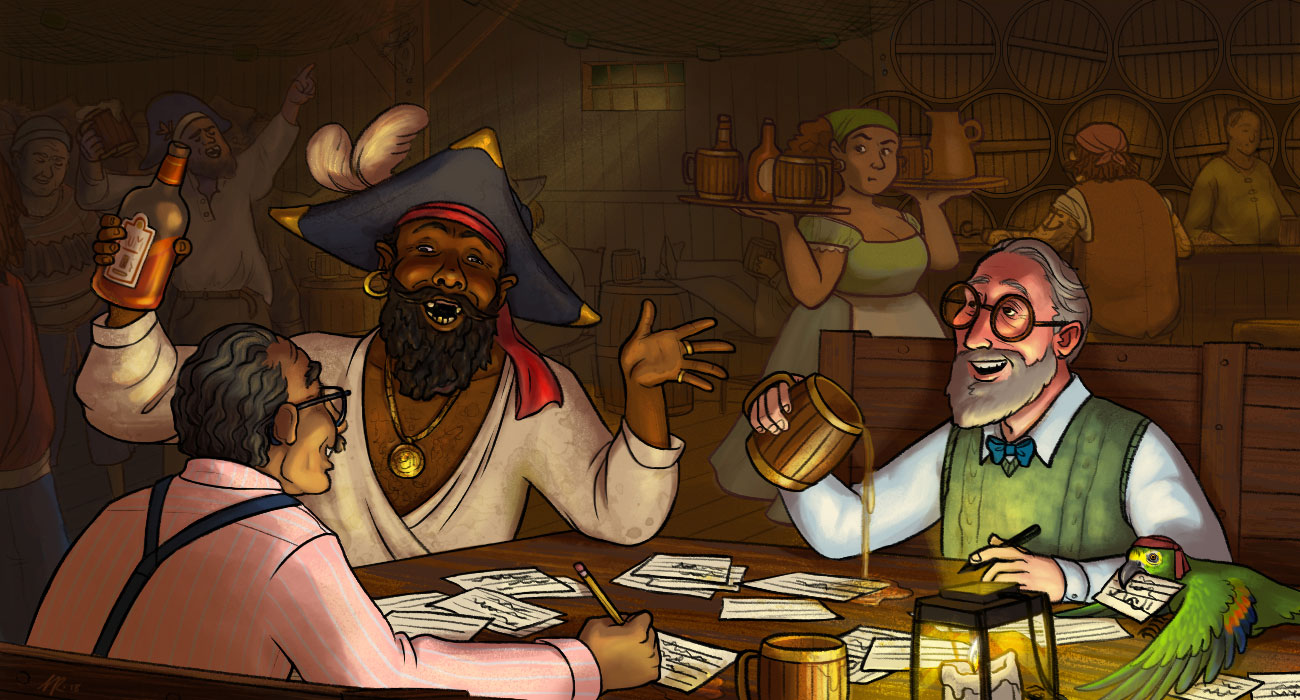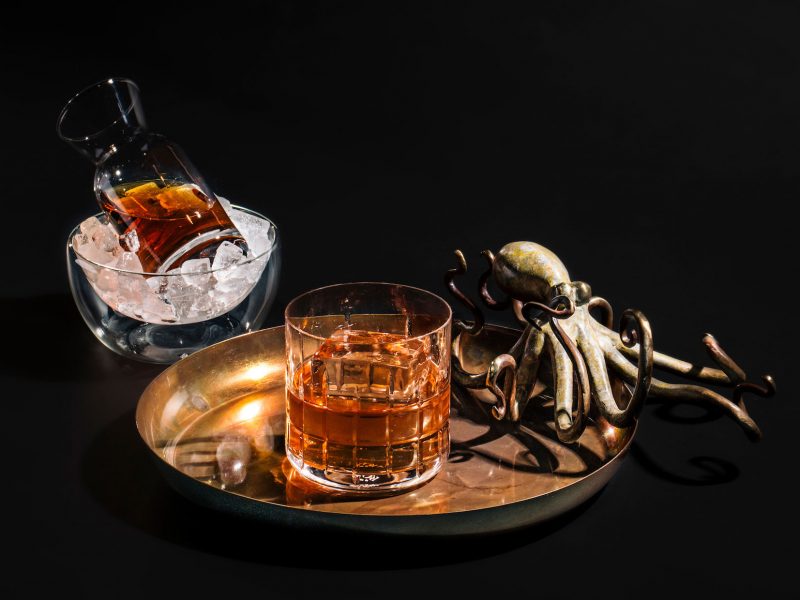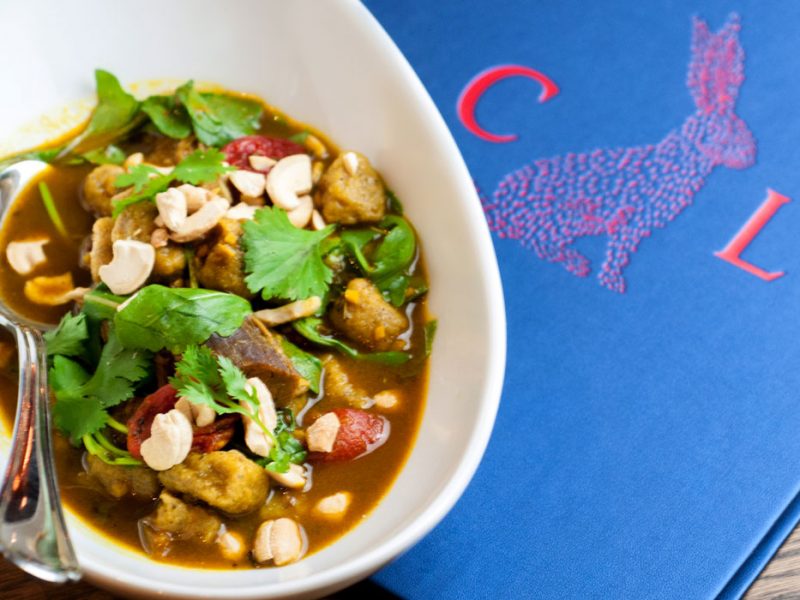There comes a moment in our early education when we’ve worked our way up to constructing a whole paragraph and are starting to think we’ve got a handle on this whole writing business. At this point, some well-intentioned teacher tasks us to write something longer, and we get a taste of the exponential phenomenon that is the challenge of organizing our thoughts. Somehow, that five-paragraph essay is not five times harder than writing the single paragraph but something more like twenty-five times harder. But that teacher knows a fool-proof method of forcing an essay into existence: We start by finding facts in books. Each fact goes onto an index card. Cards are sorted by topic into stacks. Each stack is shuffled until its internal order seems right. The stacks are swapped until the overall order seems right. Each paragraph is constructed from a near-verbatim transcription of the facts in a stack. An introduction goes in front. A conclusion goes in back. Voilà! An essay has been conjured.
At another moment, however, we outgrow this method and are expected to construct a narrative. Facts that we once would have presented in an undifferentiated sequence are given a hierarchy: some facts are presented as cause, others effect; some as archetypal, others exceptions to the rule. Most of us manage to make it out of our teens without having come close to being good at this, but hopefully we understand the goal well enough to appreciate books that present something complex with clarity and be frustrated by books that are no more considered than our old index-card constructions. By this measure, Rum, Yesterday and Today is a highly frustrating book.
Coauthored by historian Hugh Barty-King and wine-expert Anton Massel and published in 1983 by William Heinemann, Ltd., this work is apparently the most significant book about rum to be produced during the final four decades of the twentieth century. Admittedly, this is not a high bar, but the book seems to have been an ambitious undertaking. Everything about this 264-page codex—its densely typeset pages, its extensive bibliography, its meticulous index, its four glossy inserts of higher-resolution illustrations—speaks to a serious commitment on the part of the authors and the publisher.
With chapter titles like “Swizzle, Cocktail and Punch” and “Antigua, St Lucia, Grenada and Dominica,” the table of contents promises such a trove of knowledge that I thought Rum Reader editor Ben Schaffer might have put me on to the holy grail of rum history. Particularly intriguing (and ultimately damning) is the bifurcation of the heart of the book into a 49-page history entitled “350 Years of Rum Drinking” and a 136-page nation-by-nation world tour entitled “From Barbados to Australia.” What promises at the outset to be an interesting dual view of rum’s history quickly proves itself to be the result of uncritical factual regurgitation. Cuba has a chapter for Cuba facts, and Puerto Rico has a chapter for Puerto Rico facts. Certainly one of the most monumental moments in rum history for either island (and probably anywhere in the world) was the flight of the Bacardi family during the churn of the Cuban revolution. But the authors give practically no indication of that event’s significance or repercussions because half of the story is told in Cuba’s chapter and the other half is told in Puerto Rico’s chapter; no unification of this critical moment is attempted. In Barty-King and Massel’s telling, the Bacardi family flees Cuba in 1960, and the Cuban government loses the rights to the Bacardi name and thus repurposed “Havana Club.” Next, the reader is offered an incoherent discussion of cachaça; vaguely racist descriptions of the Haitian revolution; a lengthy telling of Bacardi’s expansion in Spain and “New Spain” (i.e., Mexico); and a one-page chapter that covers all windward islands other than Barbados. Then and only then do they get to Puerto Rico, but it’s not 1960. It’s the 1930s, and Bacardi is building its first facility, which just happens to come in quite handy three decades later.
Even when they aren’t juggling international rum crises, Barty-King and Massel prove to be indifferent guides to the serious quantities of information they have amassed. Quite early on, the authors note in an offhand manner that “[seventeenth-century writer Richard] Ligon had never tasted Grippo.” Upon reading this, I couldn’t tell if they were expecting me to be familiar with Grippo or if I had somehow missed the moment when they had defined it. Only by rereading the section multiple times did I confirm that Barty-King and Massel neither offer a definition (beyond it being a spirit fermented in the West Indies) nor note the absence of an historical record. Had they simply stated that they hadn’t found a definition, I would have been spared a torturous ten minutes and gone straight to other sources. (For what it’s worth, the Oxford Historical Thesaurus documents no use of this word in any context.)
A bit later, when discussing various local rum-drinking habits, they note that “for Germans […] rum was essentially a winter comforter poured into a flask of boiling hot water and sugar which, Admiral Vernon would have been surprised to know, they called ‘grog’ – Old Grog’s sailors never drink it hot!” This is an amusing aside for readers already familiar with Admiral Vernon, but a confusing one to all others, for Barty-King and Massel don’t introduce him properly until the following chapter. The absent-mindedness of the authors continues apace, and at various moments I found myself at an acute disadvantage by not knowing where Natal is (answer: the east coast of South Africa), by not knowing how an imperial gallon differs from a U.S. gallon (answer: it’s 20 percent larger), and by not knowing why sugar-making virtually collapsed in 1759 (answer: I still don’t know).
Sometimes the failings of this book go beyond sloppy organization and careless omissions and suggest a genuine lack of understanding on the authors’ part. At one point, the differences between Ronrico’s various labels are described: “White and Gold were of the same quality and both light-bodied, but white, recommended for mixing, was paler and drier than Gold and more suitable as a straight drink or mixing with soda or Coca Cola.” It doesn’t take a particularly close reading to see that no virtues at all have been left to poor Gold. At another point the authors mention a book by a friend of Ernest Hemingway, Fernando G. Campoamor, and give its title as The Merry Sun of the Sugar Cane, which is a bit strange but not implausible. They do not provide the original Spanish-language title of the book, El hijo alegre de la caña de azúcar, which would have allowed the alert reader reader to realize that “sun” had been been mistakenly used in place of “son.”
Sometimes the lack of coherent editing segues right into questionable veracity. A subchapter entitled “Cox’s Cuban Daiquiri of 1896” begins thus: “The word apparently first appeared in print in an American magazine of 1806 to describe a mixture of spirits (presumably rum), sugar, water and bitters which is to all intents and purposes the Trinidad Rum Cocktail of today.” The amount of work that the authors have left to the reader is staggering. The heading would suggest that “the word” in question might be “Daiquiri,” but no—it’s “cocktail,” which the diligent reader learns by paging back to the previous section. The reader might be ready to accept the authors’ pronouncement that rum would be the most probable spirit, but historians tell us that brandy and genever would have been the go-tos in those decades. (Since the publication of Rum, David Wondrich has traced the word “cocktail” back another decade, but we shouldn’t fault Barty-King and Massel for being unaware of diligent research conducted after their time.) The reader is also faced with the casual mention of an apparently important drink, the Trinidad Rum Cocktail. But Googling for the recipe would be a waste of time, because the capitalization is a red herring! Our authors meant only “a Trinidadian rum cocktail”—which is to say, “how rum-based cocktails are served in Trinidad.” Confoundingly (maddeningly, even), elsewhere in the book this very drink is described as “much the same [as a rum swizzle], but served in larger tumblers with straight sides,” thereby suggesting that that the rum cocktail has the juice of lime specified in the rum swizzle, thus making the rum cocktail completely different from the cocktail of 1806. Oy oy oy.
In retrospect, what should have been a nail-in-the-coffin moment came so early in the book that I didn’t fully appreciate it. Barty-King and Massel make a critical and erroneous insertion into an old idiom when they mention an historical figure trying to “warn readers against moistening the clay (pipe) with rum”. This struck me as most odd, and I turned to David Wondrich for help via Twitter:
Do you have an understanding of the origin of the phrase “moistening the clay”? Barty-King and Massel say “moistening the clay (pipe) with rum”, and that parenthetical bewilders me.
— H James Lucas (@jameslucas), 28 September 2018
No—it’s the mortal clay, from which we are all formed.
— David Wondrich (@DavidWondrich), 28 September 2018
Weeks after this exchange, after I had finally succeed in reading each and every page as closely as I could tolerate, I started sharing my thoughts with my editor, Ben. After listening to me gripe for a while, Ben told me that he had learned about Rum, Yesterday and Today because it’s in the bibliography of more recent books on rum. He asked me, “Do you think these authors actually learned something from the book? Or were they just being polite?” Maybe an unsurprising question from a professional editor, but I hadn’t thought to ask it, and it’s really the best question one could ask about this book. I told Ben that I’m pretty sure that Wayne Curtis and Ian Williams and other twenty-first century authors who cited Rum were not just being polite. I could say something about appreciating how much more difficult research was prior to the advent of the World Wide Web or even computerized library catalogues, but that doesn’t quite do justice to the weird box of facts that Barty-King and Massel built.
It really comes back to the index cards, one fact on each. Rum, Yesterday and Today is the biggest, most ambitious text I’ve encountered that reads almost exactly like a sequence of cards assembled by a grade-schooler. It’s maddeningly unhelpful to an end-user (someone who just wants to read the book and be a more informed person), but it’s a fantastic array of potential starting points for anyone setting off to do their own research and build their own stacks of index cards. Pick any decade or region associated with rum production, and Rum provides some anecdote or at least a name that could launch an investigation. The years just prior to the book’s publication are vastly overrepresented by the authors, but that barrage of uncritically presented data points will be a treasure trove for that future author who decides to write the story of the dark age of flavorful spirits that was the 1970s and ’80s.
My greatest regret about Rum, Yesterday and Today is that those most able to appreciate what it has to offer would have been better off if they had been given the authors’ original notes, those stacks of index cards with one fact and its source penciled on each. Half-conveyed ideas would be easier to complete, mistranslations easier to correct, and oblique references easier to track-down. And even if these benefits to future research weren’t significant, it would be rather lovely to sit amidst those stacks of cards and savor the faint smell of long-ago-spilled rum.




